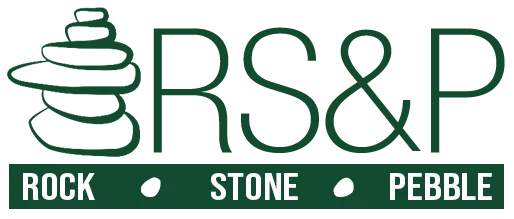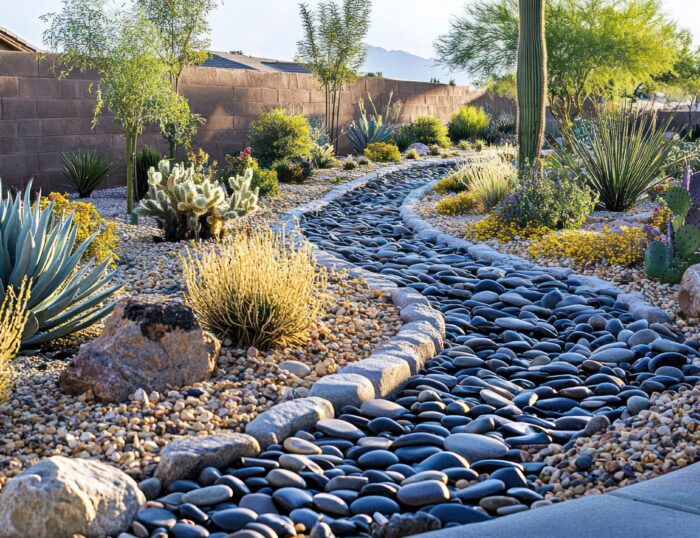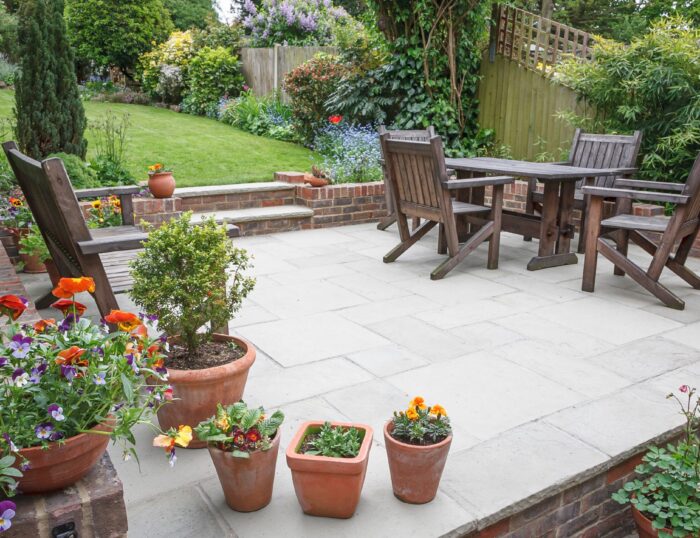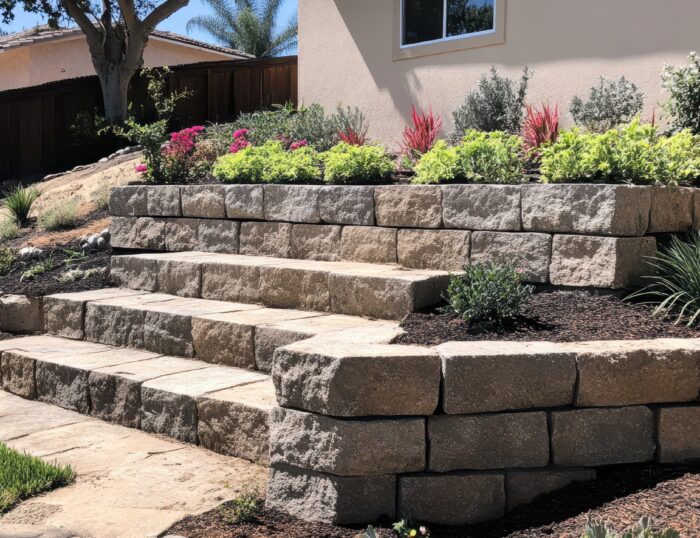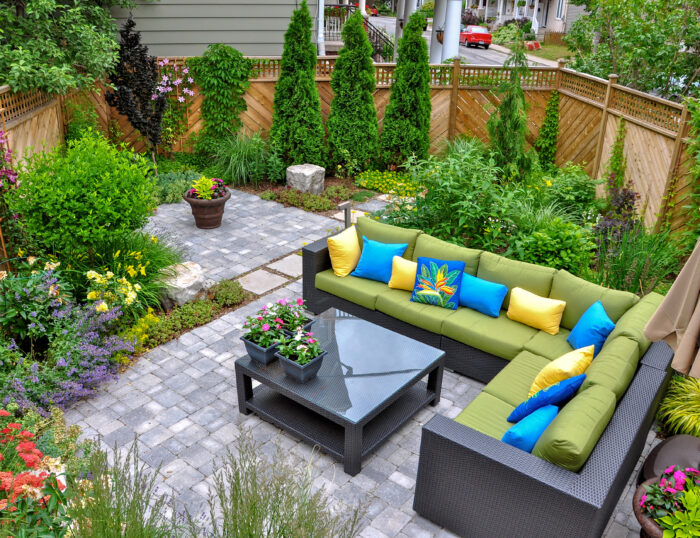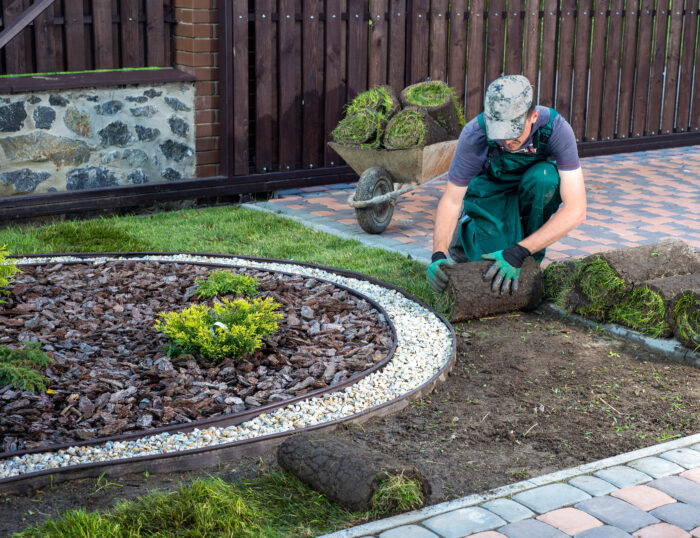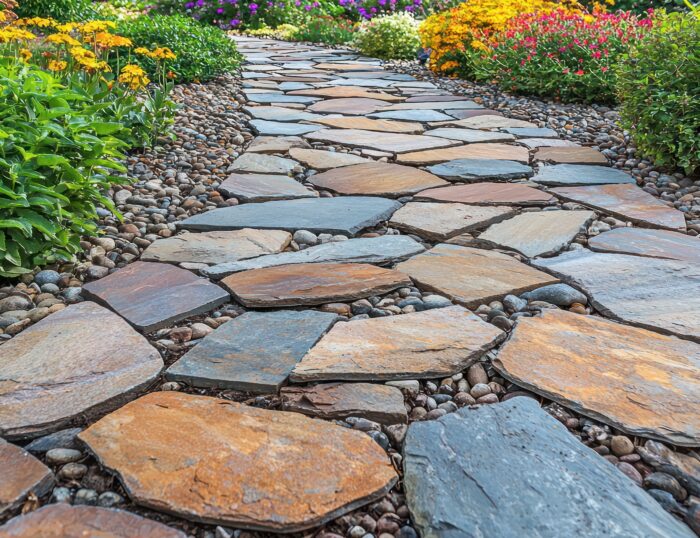
Prepare the Site
Failing to remove the grass entirely could compromise stability and long-term effectiveness, resulting in reduced visual appeal and increased expenses. Your objective is to avoid issues like uneven settling, which can destabilize your beach pebble surface.
After all the grass, including roots, is removed entirely, you’ll need to have the soil leveled and graded, followed by compacting the soil for various purposes, such as creating a good pathway or area where heavy foot traffic exists.
Edging the area where the landscape pebbles will be placed is also essential because it can reduce the likelihood of the stones spilling over into other sections of the yard. Some edging options to consider are plastic, bricks, wood, or metal.
Review Weed Barrier and Drainage Needs
Grass and weeds can find ways to continue growing, even between beach pebbles. However, with strong prevention strategies, you can obtain a weed barrier and maintain your desired landscaping appearance.
Remove existing debris and vegetation when installing a proper weed barrier. Next, you can safely secure the barrier by adding staples before placing the beach pebbles. For extra security, overlap your barrier sheets and ensure they fit snugly.
The long-term success of your landscaping project is even more likely when you use a drainage barrier. Although the stones themselves can allow for good drainage, when properly installed with landscaping fabric, erosion can be prevented, and water is more likely to filter through properly. In areas that get most of their rain during the winter months, such as Long Beach, Mexican beach pebble is especially well suited for this purpose.
Choose the Best Beach Pebble Options
The look of the stones, your budget, and the appearance you seek should be the top factors when replacing grass with beach pebbles. River rock, Mexican beach pebbles, and crushed or pea gravel are some options to consider. These selections are suitable for pathways, gardens, or water features, and they help you create a pleasant aesthetic appearance.
The color, texture, sizing, and shape of the beach pebbles are other factors to consider. Choose stones that increase stability and complement your existing landscape.
Remember Maintenance Still Matters
Don’t assume the low maintenance that comes with replacing grass with beach pebbles eliminates the need to maintain the landscaping. Occasionally raking the yard can be helpful, as it allows you to continue removing debris and redistributing the beach pebbles. If you live in an area that gets very little rainfall, such as Mesa, Mexican beach pebble will only need an occasional spray with a hose to keep them looking gorgeous.
If your beach pebbles are in a larger area, use a leaf blower to remove twigs, leaves, or other types of debris. Periodically raking allows you to redistribute the beach pebbles and lower the risk that they will settle unevenly. Power washing and edging are other things to consider.
Taking on these traditional maintenance requirements, among others, reduces the need for more extensive measures but continues to prevent waterlogging, erosion, and other challenges that necessitate more frequent stone replacements.
No matter what size or type of outdoor space you have, you can enhance its character and beauty with a variety of stones. For advice on designing your landscape with decorative rocks and beach pebbles, reach out to the experts at RS&P Rock Stone & Pebble, a premier landscape rock and supply superstore. We specialize in drought-tolerant landscaping materials, including a variety of colored pebbles and river rock. To learn how we can help you enhance the look of your lawn, call us today.
